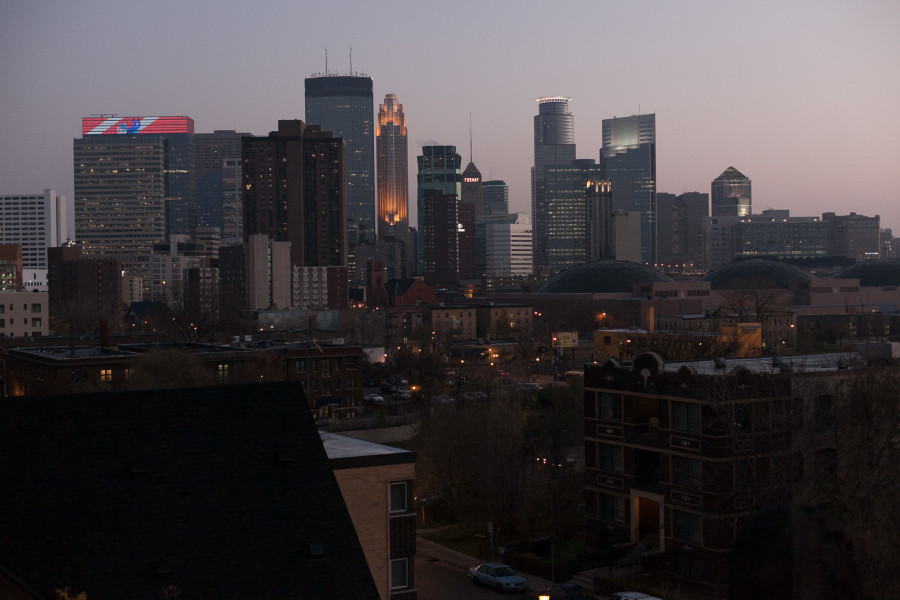
At the beginning of November, I attended the #MCN2015 conference in Minneapolis. I was part of the team documenting the conference, which means I did a few short interviews that were included in the highlights video and took many pictures.
To summarize: it was my first MCN and I loved it.
See you next year for #MCN2016 in New Orleans!
Minneapolis, Minnesota
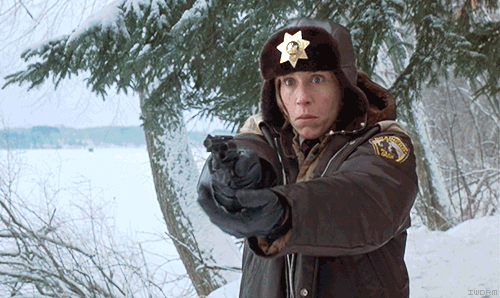
Ah, Minneapolis. The only images I had in mind where snow covered landscapes in the Coen brothers movies. And just like during the mild winter when the Coen brothers had to shoot Fargo elsewhere there was not a single snow flake when I arrived. That was actually a relief as I had absolutely no winter clothes with me: I left them all in France since I’ve been living in Brazil.
As I traveled from São Paulo to Saint Paul, what struck me on the train and bus from the airport was the mix of people and the large representation of the Hmong and East African communities. I didn’t expect to find such a diverse population in the Midwest.
Nor did I expect to have bison steak for breakfast, wow.
Mill City Museum

The day before the conference started I visited the Mill City Museum. It’s quite an experience. At a set time, you get on the former factory lift. It goes up and down like a yo-yo for 20 minutes, stopping at various floors, each set up with a different display: the manager’s office, the wheat grinding machinery, the flour packing line… Interwoven voices of ex workers tell various stories with a very lively, very emotional touch.

Then from the top floor you have a magnificient view on the Saint Anthony Falls, where it all began. They are the only waterfalls on the Mississippi river. Once an apron was built to limit natural erosion (and keep the waterfalls from sliding downstream), they provided an unlimited amount of power to supply mills that soon flourished on both banks. Minneapolis became a milling capital. The whole story is told in an entertaining short movie that really helped me understand how the city came about. Highly recommended.
So we’re in a mill museum, an old flour factory, and there’s a baking lab to try out samples prepared by a resident chef and his students. And guess what people ask for? Gluten free cakes… #itsnoteasyeveryday …
The Walker Art Center
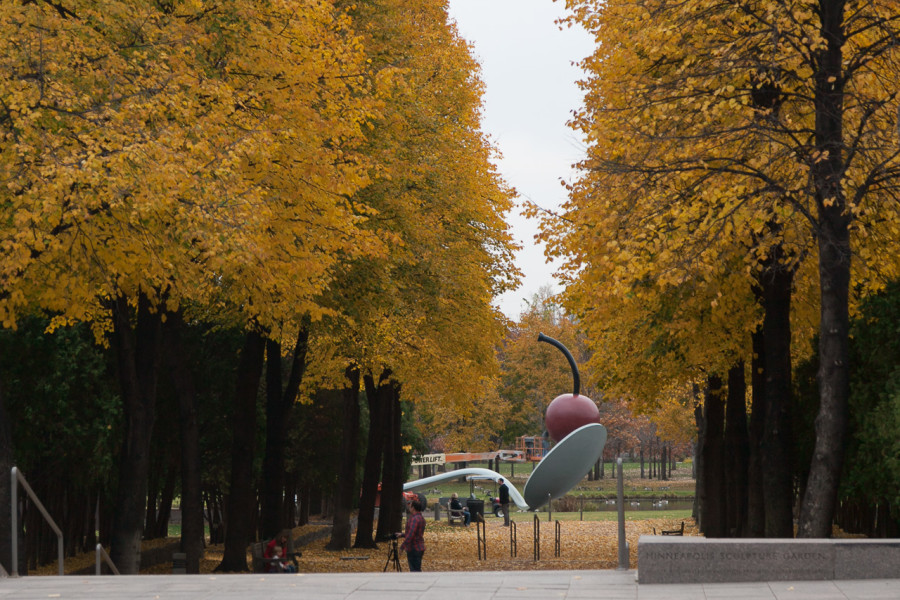
Then I went to the Walker Art Center.
I joined the tour for the conference delegates that was ending. Missed the presentation of the bespoke software that’s been built for on-demand consultation of their large film collection.
The Walker media team have a sophisticated live video mixing system that lets them burn in slides in real-time with no colour balance difference issues. That means the turnover of an event’s documentation is really fast: it can be streamed live and later pick-ups take little time.
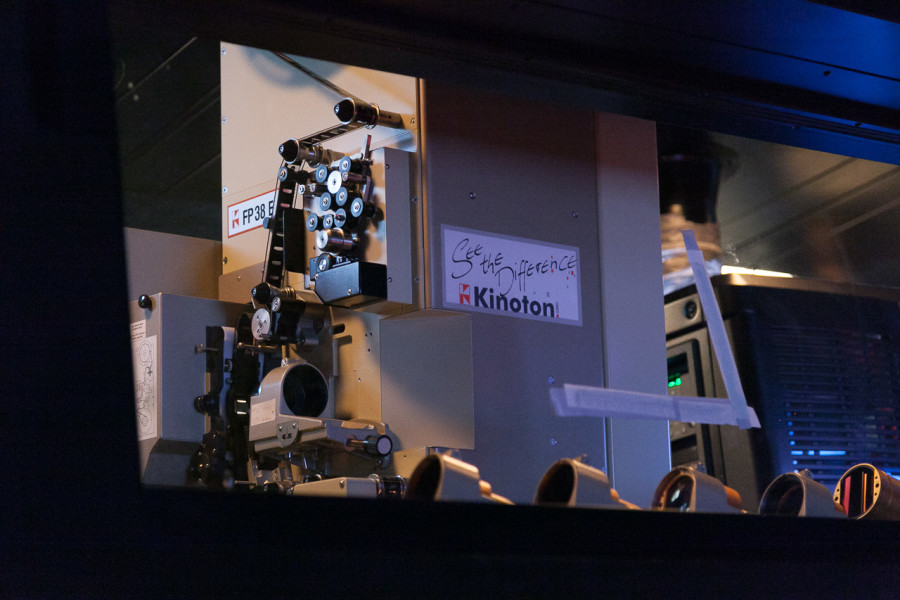
The cinema team also showed their projection room: their 35mm projector is one of the last to have been produced. This reminded me of the days I spent in a cutting room in London on a kids movie that flopped.
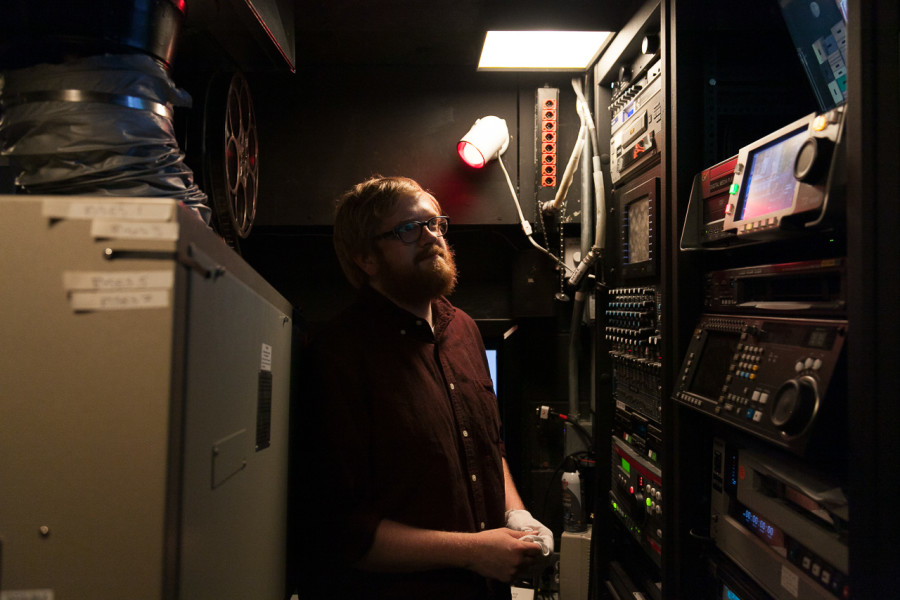
Their most valuable tool? A media player that can play anything: guests’ presentations are loaded from a flash drive to ensure smooth delivery. No more laptop -wait I forgot my adapter- adjustment time.
While at the Walker I enjoyed walking around the galleries and seeing some works by Donald Judd, Nam June Paik, and this very realistic Big Self-Portrait by Chuck Close.

According to the label, it’s the first one he ever sold – to Martin Friedman, then director of the Walker – and it launched his career. Good story!
Workshops
Got back to the conference headquarters in time for a meeting with all volunteers and then I popped in a couple of rooms where people were taking part in workshops.
In the circuit bending workshop – that seemed to gather almost all Los Angelenos I later met at the conference – everybody seemed to achieve something: making little LED lights blink, playing songs through any kind of sensor interaction…
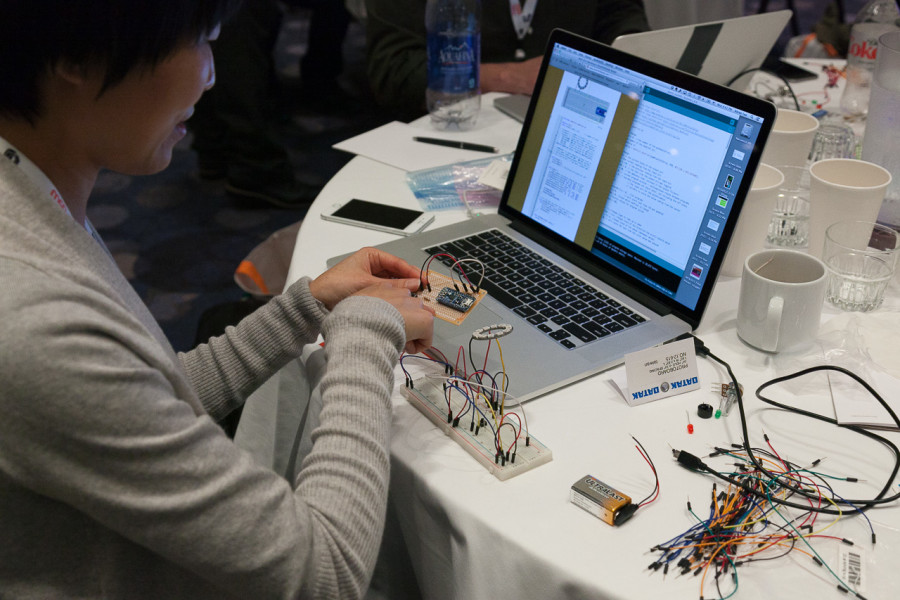
Then in the e-publishing workshop I had a sneak preview of Greg Albers very personal and very physical/spatial content layout organization!
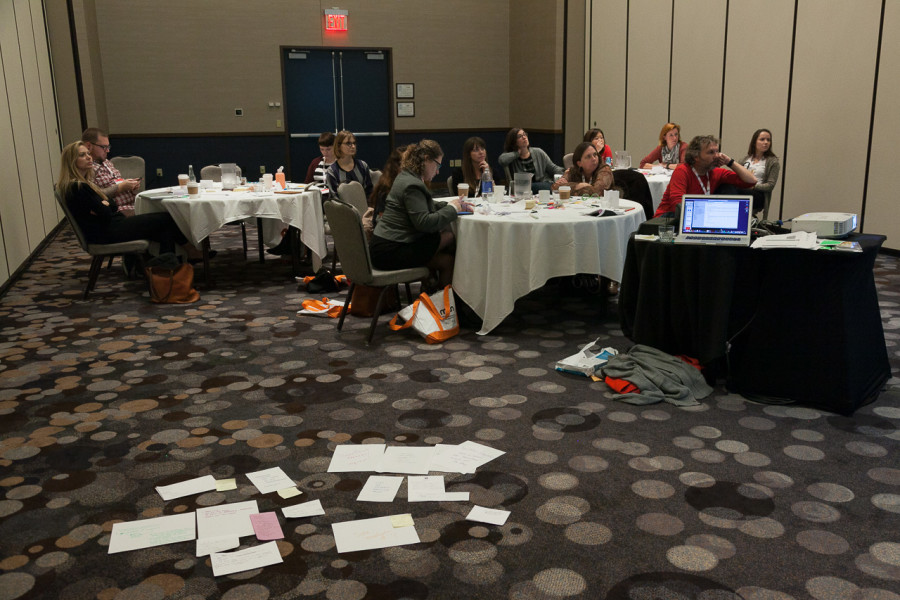
[Note: should add link to the e-publication they made at the end of the conference]
Ignite
Other people have already written about the content of the Ignite presentations, here or there.
The format is great: 20 slides that auto advance every 15 seconds. Presentations and presenters just can’t be boring.
To talk about inclusion in museums, it was a brilliant idea to select presentations about such themes as racism and accessibility. Quite hot topics too in Brazil these days.
So if you have 10 spare minutes you should watch at least these 2 presentations:
- Towards an Anti-Oppression Museum Manifesto by Nikhil Trivedi
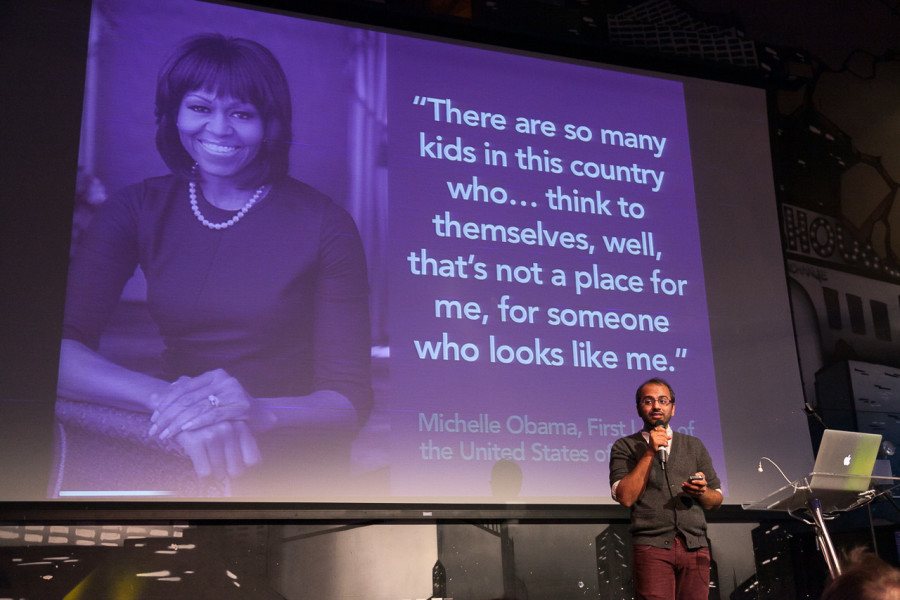
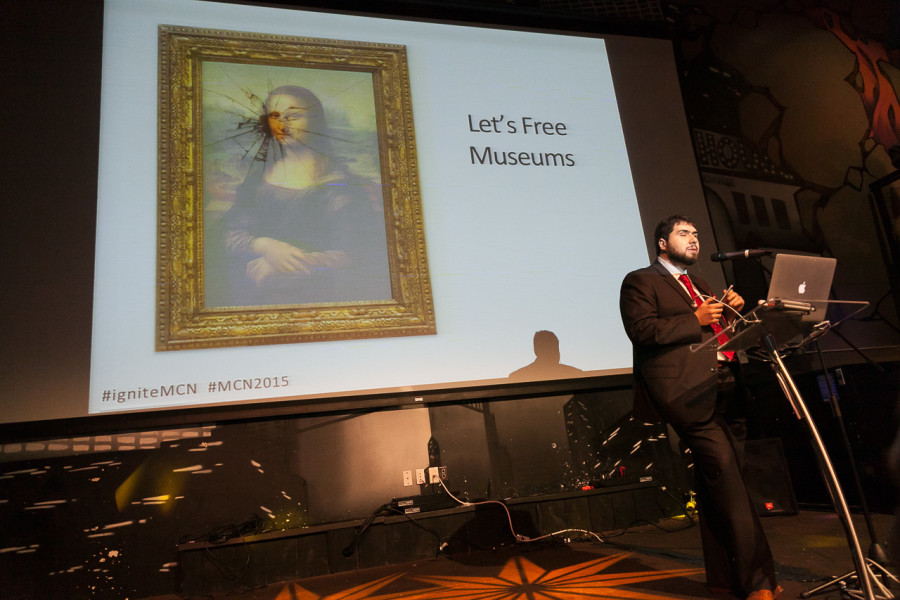
And if you’re really keen catch up the full MCN2015 Ignite playlist.
Keynote
Liz Ogbu, the keynote guest speaker introduces herself as an architect who “designs opportunities for impact”.
One project Liz showed that I found really interesting was NOW Hunters Point. The project was activated by recording the stories from residents and ex workers. So these stories wouldn’t get lost.
To do that, Liz set-up a recording studio in a container with Storycorps. Made to look just like “Your grandmother’s living room” as Liz puts it. Key take away: don’t forget a big box of kleenex when you’re set off to record emotional stories.
This resonates with a project I’m currently working on in Brazil, at Vila Itororó in the heart of São Paulo. There, we’re doing interviews of all stakeholders involved in the renovation of an entire block that used to be: a patch of wild tropical forest; a palace surrounded by popular lodgings; a squat. It is now a work-in-progress construction site, open to the public, that aims to involve the local population and former residents in an ongoing discussion and interactive process to help shape the cultural centre that the municipality has decided to build. It is all about making that public space really public.
Speed networking
The Keynote was followed by this experiment where you meet about 60 people in about 60 minutes. Wow. Dizzying. Definitely an ice-breaker.
My take-away: next time I should take notes from the start, before all stories merge and become one in my head. And take a card for each one I hand out.
The conference sessions
There were many different sessions in 5 or 6 rooms where things would happen simultaneously. Ever heard of “option paralysis”?
I had spent quite a while studying the conference programme, bookmarking sessions. When it started, it was quite hard to remember which presentations I really, really wanted to see, especially as I had often chosen more than one at the same time, in different rooms of course.
The first day I tried a butterfly approach and it didn’t work. So I dramatically changed strategy the following day and chose to focus on rooms where most of the things I had bookmarked were taking place. Which led to some interesting accidental discoveries – serendipity at its best.
Too many things to highlight so I’m just going to point to my #mcn2015 tweets.
Ah, go on then, I’ll list five talks I wish everybody I work with could watch and then we’d all come together to discuss these ideas around some fancy tropical juices. They are the ones that either really made me tweet or mesmerized me so much I forgot to tweet.
- Laura Mann from Frankly Green & Webb on service design
-
Scott Gillam on iBeacons, Universal Design, and the Visitor Experience at the Canadian Museum for Human Rights [is the presentation available online?]
-
Aaron Straup Cope suggests to move all museums -or at least just the Smithsonian- to airports (plus Aaron draws his own slides in black and white, it’s quite refreshing)
-
Andrew Lewis’s live data-driven presentation on “designing evidence” using google analytics
-
Matthew Tarr: People are not Blue Dots – demystifying the beacons [is the presentation available online?]
The good news is that it’s all been recorded by our MCN documentation team so it should possible to catch up on a couple of presentations later on. If I can remember I’ll add the links when they’re online. [Note: do it]
Reception at MIA
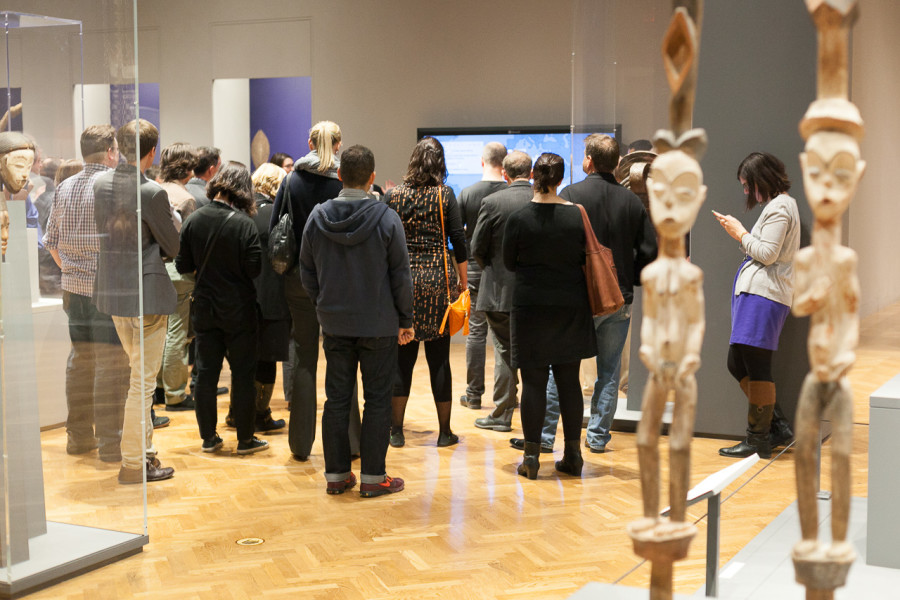
There was a presentation of an interactive screen display in the galleries that works as well for individual and collective use. Seemed interesting but I had my overdose of presentations by then and skipped this to peruse some art. Eventually got lost in the MIA. Bumped into some interesting people. That’s the best bit about the conference, you keep meeting really interesting people, and always in unexpected places, walking back from an event, at an improvised lunch, queuing for the toilet…
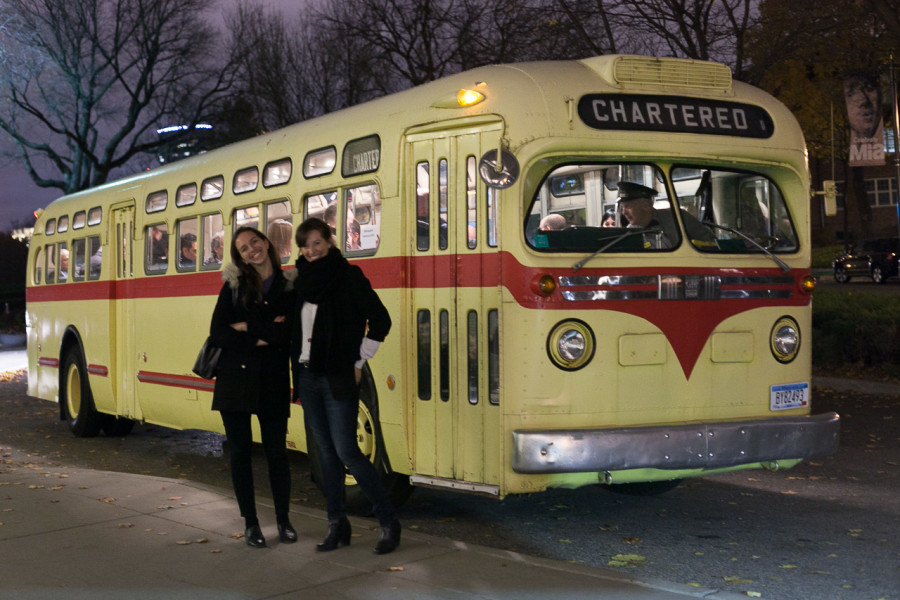
And look at that bus, straight from the 50s! (complete with a leather-gloves almost-vintage driver!)
Karaoke
When I was remotely following MCN via twitter, everybody was talking a lot about #MCNkaraoke. I really wanted to check it out now that I could.
Well, as no-one really ventured in the large K-pop catalogue of the place, it turns out a lot of songs were american classics I had never heard before, so it ended up as an interesting ethnographic trip.
Hats off to all the singers. Respect to those who even lost their voice!
Jennifer Foley pointed at the “fake Flavin” that decorated one of the karaoke rooms.
Art, everywhere. Damn.
Fake Flavin… For Jeffrey Inscho, a rock band’s name. Definitely. Live next year?
Highlights
Here’s the highlights video our documentation team produced during the conference. It was even delivered right on time for the closing plenary.
Sunday
And that was it for MCN. Soon I was off to Chicago and New York to check out some museums and new mobile devices like The Pen at Cooper Hewitt. I should make another post on this.
Epilogue
The week following MCN, in NYC, I met someone who had just got messages from family in Minneapolis about the first snowfall of the year: about 15-20 inches. Had to convert to metrics to really take it in: 40-50 cm!!!